Acupuncture, an ancient healing art with roots stretching back thousands of years, is increasingly embraced in our modern world as a powerful tool for managing pain, alleviating stress, and enhancing overall vitality. For residents of Victoria, BC, a city renowned for its health-conscious community, navigating the diverse landscape of acupuncture clinics can be the first step on a transformative journey toward well-being.
This comprehensive guide is designed to illuminate the path, offering clarity on why one might try acupuncture, how to choose a qualified practitioner, the various styles of practice available, and what to expect from this time-honored therapy.
Discovering the Path to Wellness: Why Try Acupuncture?
Embarking on a new health modality often begins with understanding its core principles and potential benefits. Acupuncture, far from being a fleeting trend, offers a profound approach to healing that has stood the test of time.
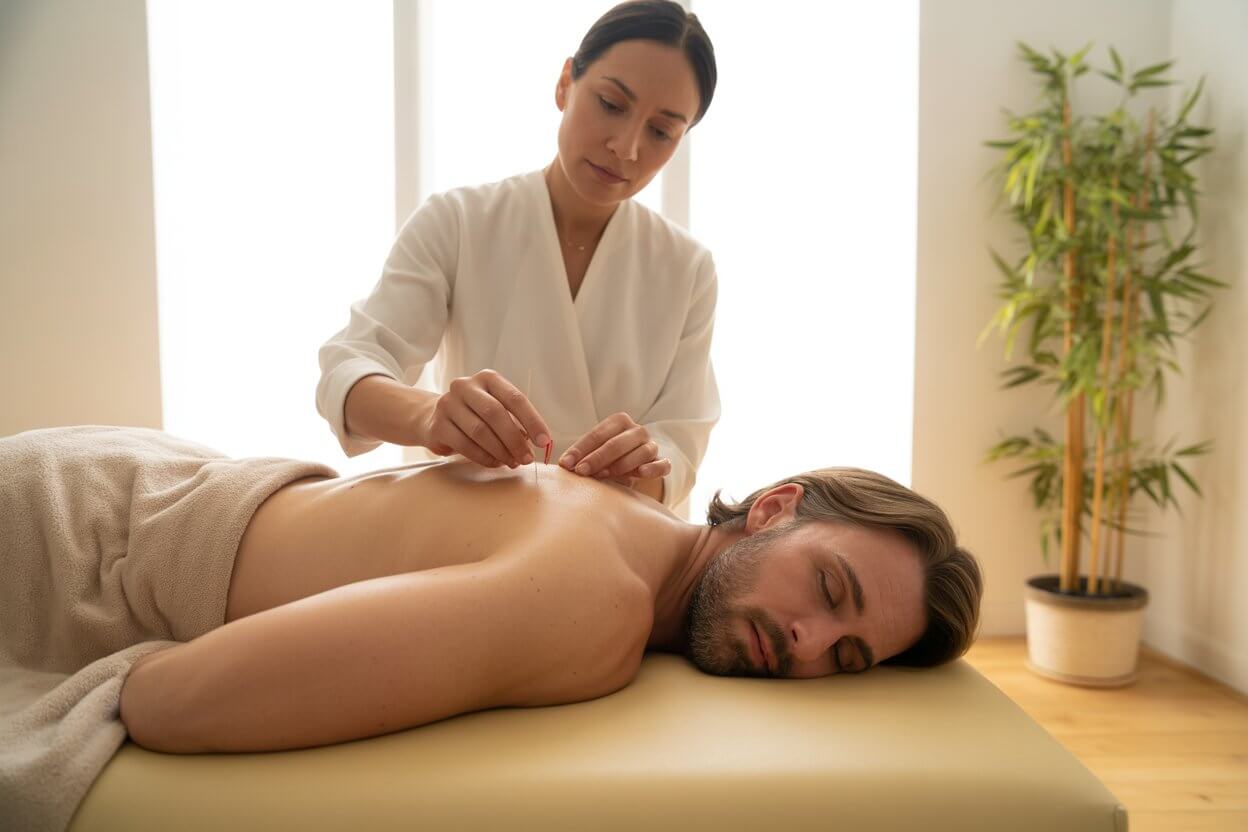
Introduction to Acupuncture: Ancient Wisdom for Modern Ailments
Acupuncture is a key component of Traditional Chinese Medicine (TCM), a sophisticated system of healing that has been practiced for at least 2,200 years, and possibly much longer. It is not merely an ancient tradition but a therapeutic intervention that has been the subject of scientific study, increasingly recognized for its effectiveness in managing a wide array of health conditions, particularly pain, and for promoting overall wellness.
At its heart, acupuncture involves the insertion of extremely thin, sterile needles into specific points on the skin to rebalance the body’s vital energy and stimulate its innate healing capabilities. This practice is built on a holistic understanding of health, considering the intricate connections between the body, mind, and spirit.
Pain Relief
Effective for back pain, neck pain, headaches, migraines, muscle pain, and sciatica
Stress Management
Addresses anxiety, depression, insomnia, and promotes overall relaxation
Improved Function
Enhances immune system, digestive health, and overall vitality
The Science and Philosophy: How Acupuncture Works
To appreciate acupuncture, it’s helpful to understand some of its foundational concepts, which blend ancient philosophy with observations of the body’s natural processes.
Central to TCM and acupuncture is the concept of Qi (pronounced “chee”). Qi is described as the vital life force or energy that flows throughout the body, animating all its functions. This energy circulates through specific pathways known as meridians. These meridians are like an invisible network connecting organs, tissues, and all systems of the body; traditionally, there are 12 major meridians, each associated with a major organ system.
According to TCM theory, a smooth and balanced flow of Qi is essential for health. Illness or symptoms arise when the flow of Qi is disrupted, blocked, or imbalanced. Acupuncture aims to restore this balance by inserting needles at specific acupoints along these meridians.
Modern scientific research has begun to shed light on the physiological mechanisms through which acupuncture may exert its effects. Studies suggest that needling acupoints can stimulate the central nervous system, prompting the release of various biochemical substances including endorphins, the body’s natural painkillers, and neurotransmitters, which are chemicals that modulate nerve impulses.
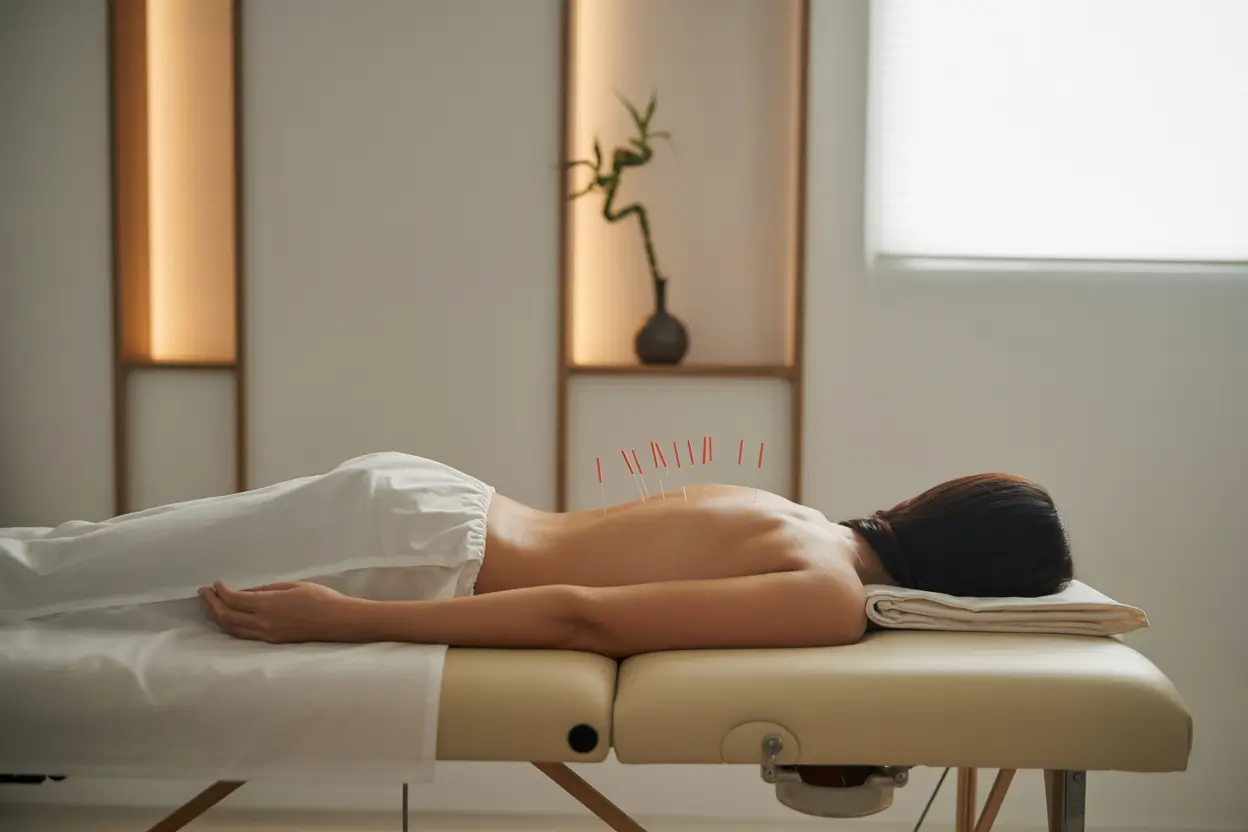
A Wealth of Benefits: What Can Acupuncture Do for You?
- Pain Management: One of the most well-documented benefits is relief from chronic pain conditions such as arthritis, low back pain, neck pain, headaches, and migraines
- Emotional Well-being: Many find acupuncture helpful for anxiety, depression, and stress reduction
- Women’s Health: Supports fertility, eases pregnancy discomforts, manages menopause symptoms, and addresses PMS
- Digestive Health: Beneficial for conditions like IBS and other digestive disorders
- Immune Support: Can strengthen the immune system and help with allergies and respiratory conditions
Our Guiding Principles: How We Selected Victoria’s Top Acupuncture Clinics
Choosing a healthcare provider is a significant decision. To assist readers in finding reputable acupuncture services in Victoria, this guide has employed a careful selection process, prioritizing clinics and practitioners who demonstrate a commitment to quality care, patient safety, and professional excellence.
Key Selection Criteria
- Practitioner Qualifications & CCHPBC Registration: All acupuncturists practicing in British Columbia must be registered with the College of Complementary Health Professionals of British Columbia (CCHPBC). This regulatory body ensures practitioners meet specific educational requirements, adhere to a code of ethics, and maintain practice standards.
- Range and Specialization of Services: We considered clinics that offer a diverse range of acupuncture styles (e.g., TCM, Japanese, Cosmetic) and complementary modalities (e.g., cupping, moxibustion, herbal medicine).
- Patient Experience and Reviews: Clinics that cultivate positive patient experiences, as reflected in publicly available testimonials or reviews, are generally preferred.
- Clinic Atmosphere and Environment: The healing process can be significantly influenced by the environment. Clinics described as calming, professional, clean, and welcoming are favored.
- Hygiene and Safety Standards: Given the invasive nature of needling, impeccable hygiene and safety are non-negotiable, including the use of sterile, single-use, disposable needles.
Ultimately, finding the right acupuncturist is about establishing a good “fit” – a practitioner with whom you feel comfortable, who listens to your concerns, and whose treatment approach aligns with your preferences and health goals. This guide is here to empower you with information to make that choice confidently.
A Spectrum of Healing: Understanding Types of Acupuncture Practices
Acupuncture is not a monolithic practice; rather, it encompasses a variety of styles and philosophies, each with its unique nuances in diagnosis, technique, and application. Understanding these differences can help individuals choose an approach that best aligns with their health goals and personal preferences.
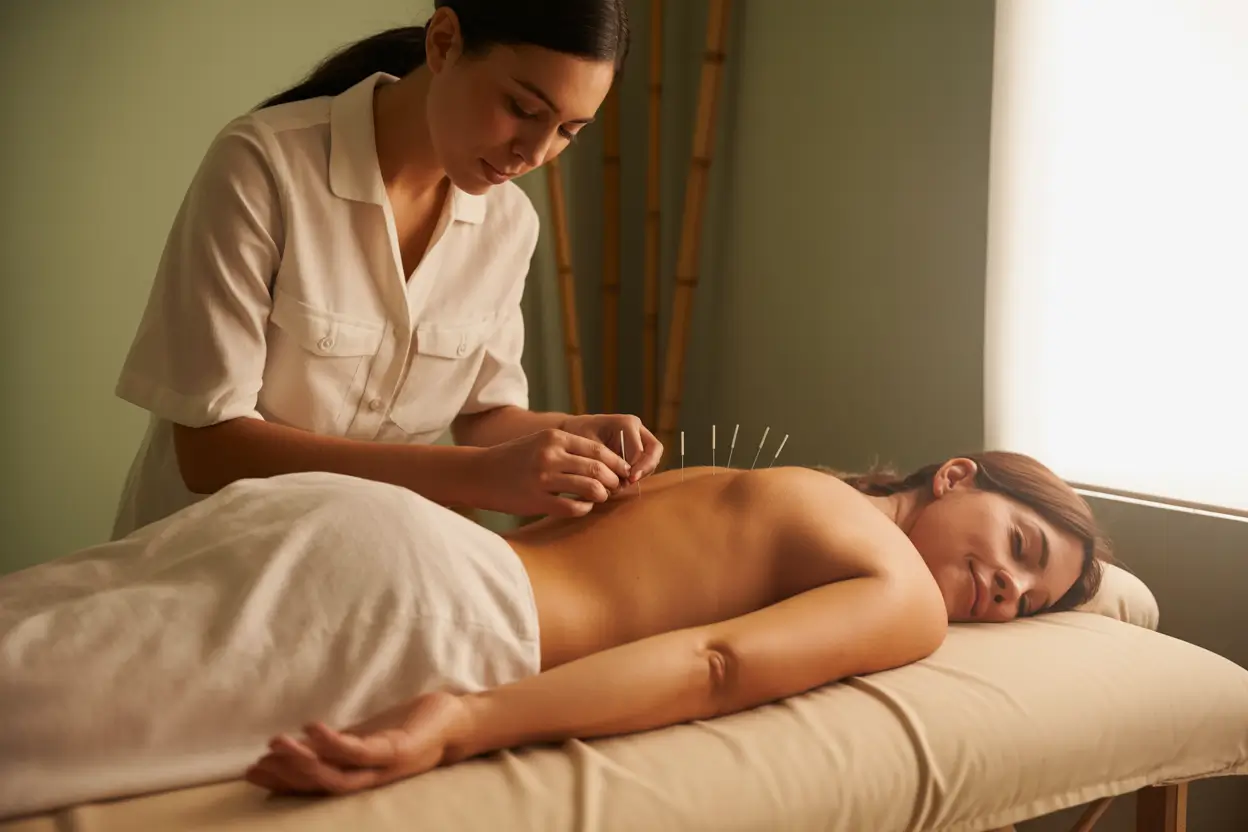
Traditional Chinese Medicine (TCM) Acupuncture
TCM acupuncture is the most widely practiced form globally and serves as the foundation for many other styles. It is a complete medical system developed over millennia, based on the principles of balancing Yin and Yang, ensuring the smooth flow of Qi through the meridians, and addressing the root cause of illness rather than just alleviating symptoms.
Key Features:
- Comprehensive diagnosis including tongue and pulse examination
- Selection of specific acupoints along the 12 primary meridians
- Often integrated with other TCM modalities like herbal medicine, moxibustion, and cupping
- Incorporates Five Element Theory (Wood, Fire, Earth, Metal, Water)
Japanese-Style Acupuncture
Japanese acupuncture is renowned for its exceptionally gentle and subtle approach, with a strong emphasis on patient comfort and refined techniques. While it evolved from classical Chinese medicine, it has developed distinct characteristics over centuries of practice in Japan.
Key Features:
- Ultra-fine needles, significantly thinner than those used in TCM
- Gentle and shallow insertions, often using an insertion tube
- Strong emphasis on palpation (touch diagnosis) of the abdomen and meridians
- Frequent use of moxibustion (warming therapy)
- Typically uses fewer needles than TCM approaches
Five-Element Acupuncture
Five-Element Acupuncture is a distinct tradition rooted in the ancient Chinese understanding of natural law and the cyclical flow of Qi as it manifests through five fundamental qualities or “elements”: Wood, Fire, Earth, Metal, and Water. This style focuses on identifying and treating the root cause of imbalance at the level of the patient’s “Constitutional Factor” (CF).
Key Features:
- Identification of the patient’s Constitutional Factor (CF)
- Diagnosis through Color, Sound, Odor, and Emotion (CSOE)
- Strong emphasis on the patient’s spirit (Shen)
- Highly individualized point selection
- Focus on restoring natural harmony with the Five Elements
Cosmetic & Facial Acupuncture
Cosmetic acupuncture, also known as facial rejuvenation acupuncture, is a natural and minimally invasive treatment that employs the insertion of very fine needles into specific points on the face, and sometimes on the body, to improve skin appearance, reduce the visible signs of aging, and promote a more youthful, radiant complexion.
Key Features:
- Stimulates collagen and elastin production
- Increases blood circulation to facial tissues
- Improves lymphatic drainage to reduce puffiness
- Enhances facial muscle tone
- Often combined with techniques like microneedling, facial cupping, or gua sha
Complementary Modalities
Many acupuncturists integrate other therapeutic techniques into their treatment sessions to enhance the effects of needling or to address specific aspects of a patient’s condition.
Cupping Therapy
Involves placing glass, bamboo, or silicone cups on the skin and creating suction to promote blood flow, relieve muscle tension, and release fascial adhesions.
Moxibustion
A heat therapy using dried mugwort herb burned near or on acupuncture points to invigorate the flow of Qi and blood, dispel cold, and strengthen Yang energy.
Gua Sha
Involves gently scraping the skin with a smooth-edged instrument to improve circulation, release muscle tension, and reduce inflammation.
Chinese Herbal Medicine
Customized herbal formulas designed to address specific patterns of imbalance, working synergistically with acupuncture to treat the root cause of illness.
The Perfect Pairing: Combining Massage Therapy and Acupuncture
While both massage therapy and acupuncture are powerful healing modalities in their own right, when combined, they create a synergistic approach that can significantly enhance therapeutic outcomes. This integrated approach addresses both the physical and energetic aspects of health, offering a more comprehensive path to wellness.

Complementary Benefits: How These Therapies Work Together
Massage Therapy Prepares the Body
- Relaxes tight muscles and fascia, making the body more receptive to acupuncture
- Improves circulation, enhancing the delivery of nutrients and oxygen to tissues
- Reduces initial tension, allowing for deeper acupuncture needle placement
- Helps identify areas of restriction that may benefit from targeted acupuncture
Acupuncture Enhances Massage Results
- Addresses energetic imbalances that may be causing physical symptoms
- Stimulates the release of endorphins, extending the pain relief from massage
- Targets specific meridian points related to chronic issues
- Helps regulate the nervous system for longer-lasting relaxation
Conditions That Respond Well to Combined Treatment
The integration of registered massage therapy and acupuncture can be particularly effective for addressing a wide range of health concerns:
Musculoskeletal Issues
- Chronic back and neck pain
- Sports injuries and recovery
- Joint pain and arthritis
- Muscle tension and spasms
Stress-Related Conditions
- Anxiety and depression
- Insomnia and sleep disorders
- Tension headaches and migraines
- Digestive issues triggered by stress
Chronic Conditions
- Fibromyalgia
- Chronic fatigue syndrome
- Autoimmune disorders
- Migraines and chronic headaches
What to Expect in an Integrated Session
When receiving both massage therapy and acupuncture in a single session, the experience typically follows one of these approaches:
Sequential Treatment
The practitioner may begin with deep tissue massage to relax the muscles and tissues, followed by acupuncture to address specific meridians and points. This sequence allows the body to be more receptive to the acupuncture needles after the muscles have been relaxed.
Integrated Approach
Some practitioners skilled in both modalities may integrate techniques throughout the session, perhaps placing acupuncture needles in certain areas while performing massage on other parts of the body, or using acupressure techniques during the massage.
Collaborative Care
In some clinics, you might work with two different specialists who collaborate on your treatment plan, scheduling massage and acupuncture sessions in a strategic sequence to maximize benefits.
Many multidisciplinary clinics in Victoria and surrounding areas offer both massage therapy and acupuncture services, making it convenient to experience this powerful therapeutic combination. When seeking integrated care, look for practitioners who communicate well with each other and take a holistic approach to your health concerns.
Your Local Guide: Victoria’s Top Acupuncture Clinics by Neighborhood
Victoria, BC, is home to a vibrant and skilled community of acupuncture practitioners. To help navigate the options, this section provides a guide to some notable clinics, categorized by neighborhood where possible. All listed practitioners should be registered with the College of Complementary Health Professionals of British Columbia (CCHPBC).
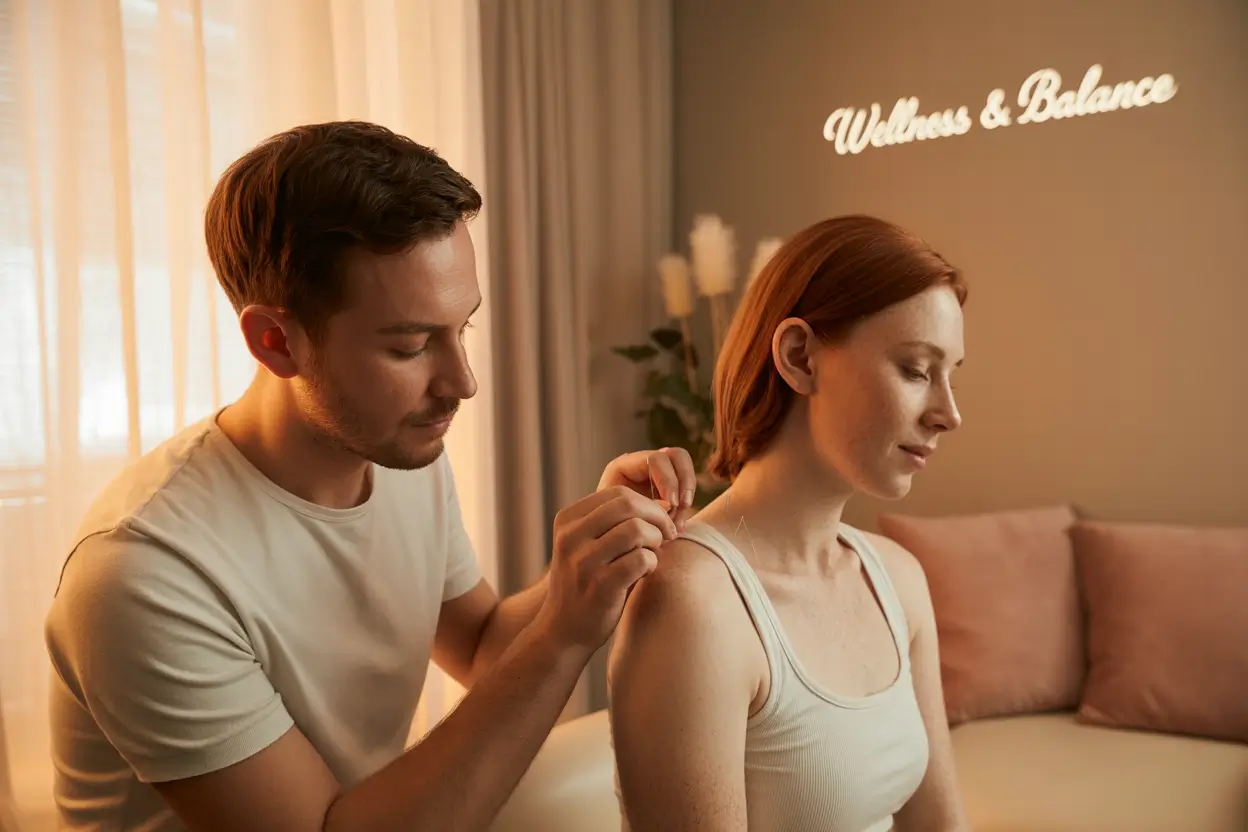
Downtown / James Bay
Downtown Victoria offers a high concentration of acupuncture clinics, making it convenient for those who work in the city center or prefer urban accessibility.
Tall Tree Health (James Bay Location)
Where to find them: Steps from downtown Victoria, behind the Parliament grounds (check their booking site for the exact address).
Who you’ll see: Dr. Edward McCloskey (Registered Acupuncturist & Doctor of Traditional Chinese Medicine).
What they offer: Traditional Chinese Medicine (TCM), Chinese Herbal Medicine. They can help with things like allergies, anxiety, chronic pain, colitis, depression, headaches, low energy, low back pain, menopause, poor sleep, and weight management.
Good to know: This is part of a multidisciplinary clinic (physio, chiro, massage, etc.). They focus on getting to the root cause and restoring harmony.
Geometry Integrated Health
Where to find them: 827 Broughton Street, Victoria, BC V8W 1E4.
Get in touch: (250) 590-3757.
Who you’ll see: Brayln Poirier (R.Ac.), Clara Bernier (R.Ac.), Elisha Veldhuijzen (R.Ac.), Nani Stevens (R.Ac.).
What they offer: Acupuncture & Traditional Chinese Medicine (TCM). They treat a wide range of health issues including headaches, insomnia, depression, back pain, and allergies.
Good to know: A multidisciplinary clinic in a cool heritage brick building with a modern vibe. They offer direct billing and were awarded VicNews’ Best Health Treatment Centre.
Fix Healthcare (Downtown Location)
Where to find them: In the Atrium building, at the corner of Johnson and Blanshard Streets, Victoria (grab the specific address from their website).
Who you’ll see (Downtown): Claire Lipke (R.Ac., Kinesiologist, TCM Diploma), Quinn Rose (R.Ac., CTCMA registered), Brianna Smart (R.Ac., CTCMA registered, Dr.TCM Diploma).
What they offer: Traditional Chinese Medicine (TCM), Motor Point Acupuncture. Quinn Rose has a special interest in fertility, pregnancy, postpartum care, pain, and head/face issues. Brianna Smart has done extra studies in stroke rehabilitation/paralysis.
Extras: Cupping, Gua Sha, Moxibustion (with Quinn Rose). The clinic also generally mentions diet therapy and Tui Na.
Good to know: Another multidisciplinary spot with physio, chiro, and more.
Cordova Bay / Saanich
The Saanich area offers several well-established acupuncture clinics with diverse specializations.
Tall Tree Health (Cordova Bay Location)
Where to find them: Mattick’s Farm, Cordova Bay, Saanich (exact address on their booking site).
Who you’ll see: Chantelle Yeo (R.Ac.), Lucy Mei Lee (R.Ac.), Mercy Southam (R.Ac.).
What they offer: Acupuncture, Chinese Herbal Medicine. They support conditions like allergies, anxiety, chronic pain, etc.
Good to know: This is the original Tall Tree Health location, also multidisciplinary.
Westshore (Langford / Colwood / View Royal) / Sooke
For those living in the growing Westshore communities, several quality acupuncture options are available.
Sea to Tree Health & Wellness (Westshore Location)
Where to find them: 2220 Sooke Rd, Victoria, BC V9B 0G9.
Get in touch: (778) 352-3115. Email: [email protected]
Who you’ll see (Acupuncture Focus): Christine (Registered Acupuncturist, R.H.N., Level III Usui Reiki Master).
What they offer: A holistic approach using local and distal needling. Focuses on physical pain (myofascial lines), sleep issues, women’s health, digestive problems, anxiety, and depression.
Good to know: They also have a Sooke location. Christine graduated from Oshio College.
This is just a selection of the many excellent acupuncture clinics available in the Victoria region. We recommend contacting clinics directly for the most current information about practitioners, specializations, and services.
Your First Step to Healing: Preparing for Your First Acupuncture Visit
Embarking on your first acupuncture experience can be exciting. A little preparation can help ensure the visit is smooth, comfortable, and effective. Knowing what to expect can also alleviate any apprehension, as the process is generally gentle and designed to promote relaxation and healing.
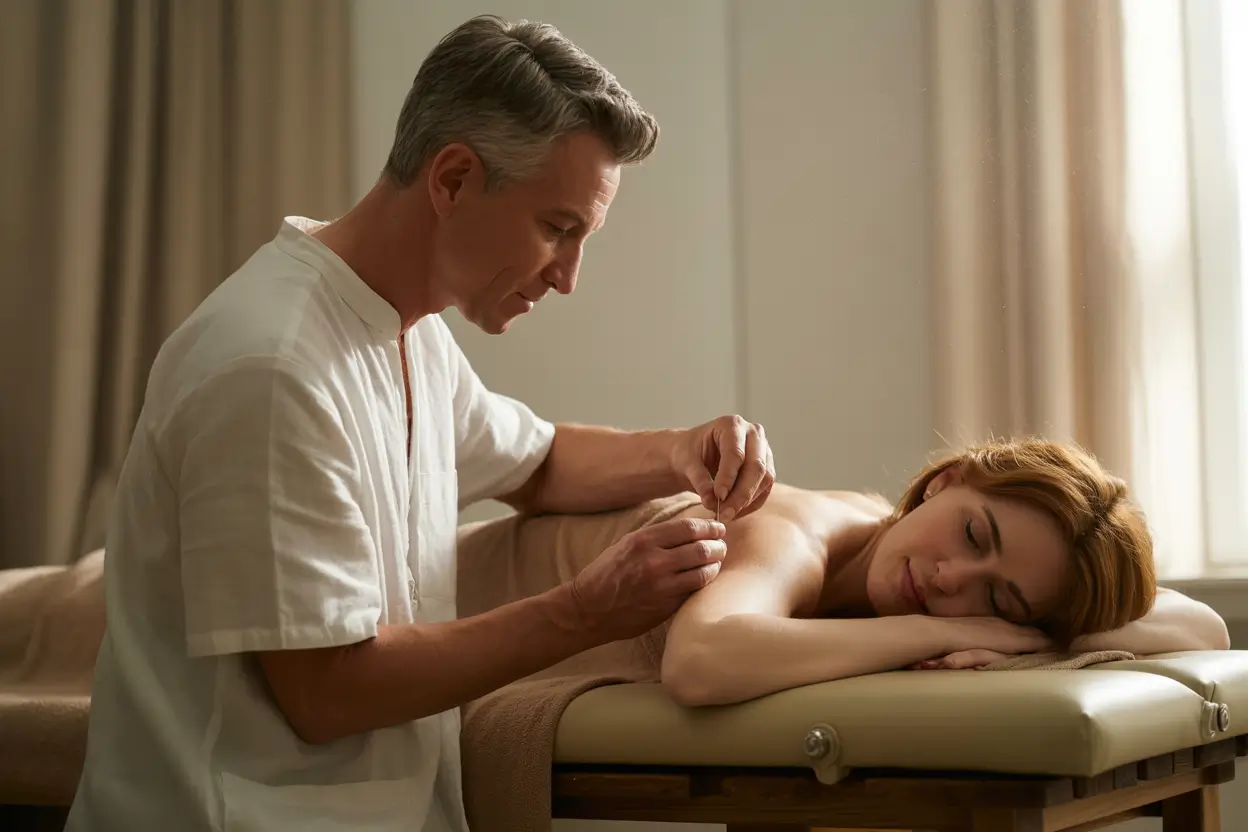
Before Your Appointment
- What to Wear: Opt for loose, comfortable clothing. Many commonly used acupuncture points are on the arms (below the elbows) and legs (below the knees), as well as the abdomen and back. Clothing that can be easily rolled up or adjusted is ideal.
- Eating & Drinking: It’s best not to arrive on an empty stomach, nor should one be overly full. Having a light meal or snack an hour or two before the treatment is recommended. Ensure adequate hydration by drinking water.
- Avoid Alcohol/Recreational Drugs: These substances can interfere with the practitioner’s ability to make an accurate TCM diagnosis and may affect the treatment’s outcome.
- Paperwork: As with any new healthcare provider, expect to fill out a comprehensive health history form. Arriving a few minutes early can allow time for this.
During the Consultation & Treatment
Your first acupuncture visit will typically be longer than subsequent ones, as it includes a detailed intake and assessment.
- Initial Discussion: The acupuncturist will review your health history and ask further questions about your symptoms, lifestyle, and overall health goals.
- TCM Diagnostic Methods: If your practitioner uses TCM, they may examine your tongue and feel your pulse at three positions on each wrist to assess your overall health and identify patterns of imbalance.
- The Needling Process: Based on the assessment, the practitioner will select specific acupoints. The needles used are extremely thin, sterile, and single-use. Insertion is usually quick and causes minimal discomfort. You’ll rest with the needles in place for 10-20 minutes.
- Communication: Throughout the treatment, it’s important to communicate with your practitioner. If you experience any significant discomfort, let them know immediately.
After Your Session
- Immediate Sensations: Following a treatment, some individuals feel deeply relaxed and calm, while others may feel energized and revitalized.
- Stay Hydrated: Drink plenty of water to help your body process the treatment.
- Avoid Strenuous Activity: It’s generally advisable to avoid intense physical exercise or stressful activities for a few hours after your treatment.
- Observe Changes: Pay attention to any shifts in your symptoms, energy levels, mood, or overall well-being in the hours and days following your treatment.
Clearing the Path: Frequently Asked Questions (FAQs) About Acupuncture
Embarking on any new health journey naturally comes with questions. This section aims to address some of the most common queries about acupuncture, providing clear, evidence-based answers to help demystify the practice and empower informed decisions.
Conclusion: Your Journey to Wellness Starts Here
Acupuncture offers a time-tested, versatile, and increasingly evidence-supported pathway to health and well-being. From alleviating chronic pain and reducing stress to enhancing fertility and promoting facial rejuvenation, its applications are diverse, reflecting a deep understanding of the body’s innate capacity for healing.
For those in Victoria, BC, a wealth of skilled and regulated practitioners are available, offering a spectrum of styles from Traditional Chinese Medicine to gentle Japanese techniques and modern electro-acupuncture. The key to a positive experience lies in selecting a CCHPBC-registered practitioner whose approach resonates with one’s individual needs and preferences.
Whether seeking relief from a specific ailment or aiming to enhance overall vitality, acupuncture provides a holistic and personalized approach. The journey to wellness is unique for each person, and for many in Victoria, acupuncture may prove to be a valuable and transformative step along that path.


Leave a Reply